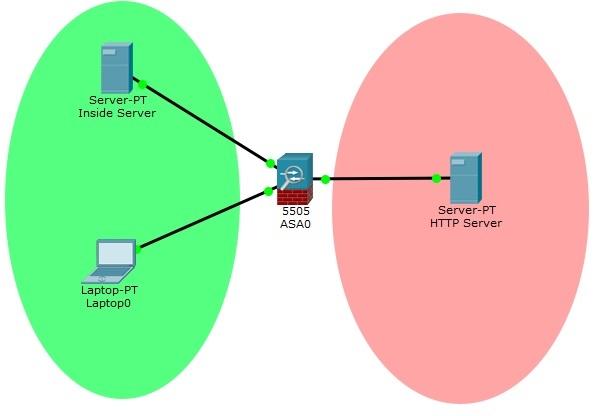
- #ASA 5505 CISCO PACKET TRACER STEP BY STEP CONFIGUARATIO HOW TO#
- #ASA 5505 CISCO PACKET TRACER STEP BY STEP CONFIGUARATIO MANUAL#
- #ASA 5505 CISCO PACKET TRACER STEP BY STEP CONFIGUARATIO CODE#
- #ASA 5505 CISCO PACKET TRACER STEP BY STEP CONFIGUARATIO SERIES#
The basic ASA configuration setup is three interfaces connected to three network segments.
#ASA 5505 CISCO PACKET TRACER STEP BY STEP CONFIGUARATIO SERIES#
See the Information About NAT section of Book 2: Cisco ASA Series Firewall CLI Configuration Guide, 9.1 for more information about NAT. This complicates this NAT type, and as a result it will not be used in this configuration example.
#ASA 5505 CISCO PACKET TRACER STEP BY STEP CONFIGUARATIO MANUAL#
Manual NAT is more robust in its granularity, but it requires that the lines be configured in the correct order so that it can achieve the correct behavior. For example, you cannot make a translation decision based on the destination in the packet as you could with the second type of NAT, Manual Nat. This is the easiest form of NAT, but with that ease comes a limitation in configuration granularity. One primary advantage of this NAT method is that the ASA automatically orders the rules for processing in order to avoid conflicts. An example of this is provided later in this document. The first of the two, Object NAT, is configured within the definition of a network object. NAT on the ASA in version 8.3 and later is broken into two types known as Auto NAT (Object NAT) and Manual NAT (Twice NAT). See the Configuring Access Rules section of Book 2: Cisco ASA Series Firewall CLI Configuration Guide, 9.1 for more information about ACLs. This means that for 8.3 and later code, and this document, traffic to the host's real IP is permitted and not the host's translated IP. In version 8.3 and later code, the ASA untranslates that packet before it checks the interface ACLs. In other words, the ACL had to permit the packet as if you were to capture that packet on the interface.
#ASA 5505 CISCO PACKET TRACER STEP BY STEP CONFIGUARATIO CODE#
In earlier versions of ASA code (8.2 and earlier), the ASA compared an incoming connection or packet against the ACL on an interface without untranslating the packet first.

This behavior can also be overridden with an ACL. Also the ASA, by default, allows traffic from higher to lower security interfaces. This can be overridden by an ACL applied to that lower security interface. By default, traffic that passes from a lower to higher security level is denied.

Access Control List OverviewĪccess Control Lists (Access-lists or ACLs for short) are the method by which the ASA firewall determines if traffic is permitted or denied.


If you use a platform such as an ASA 5505, which uses VLANs instead of a physical interface, you need to change the interface types as appropriate. This document was written with an Adaptive Security Appliance (ASA) 5510 firewall than runs ASA code version 9.1(1), but this can easily apply to any other ASA firewall platform.
#ASA 5505 CISCO PACKET TRACER STEP BY STEP CONFIGUARATIO HOW TO#
This document provides a simple and straightforward example of how to configure Network Address Translation (NAT) and Access Control Lists (ACLs) on an ASA Firewall in order to allow outbound as well as inbound connectivity.


 0 kommentar(er)
0 kommentar(er)
